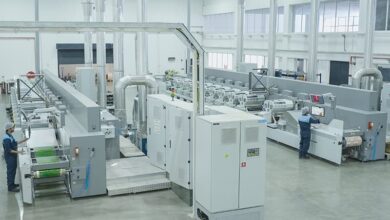Bioprinting and Personalised Medicine to Drive $6 Billion 3D Medical Printing Market by 2027
3D printing technology has been applied across a wide range of applications in healthcare, providing customised anatomical models and surgical tools that facilitate training and planning of complex surgeries, as well as increasingly sophisticated customised implants and prosthetics that offer better fit and functionality for patients.
Now a new study from Smithers Rapra forecasts the rapid growth of 3D printed medical and pharmaceutical products over the next 10 year, from a modest $400 million as of 2016 to a $6 billion market by 2027.
Smithers Rapra study ‘The Future of 3D Printing for Medical and Pharmaceuticals to 2027’ notes that the key driver of the rapid adoption of 3D technology in healthcare is the significant outlook potential it offers in delivering personalised medicine – the new mantra of modern medicine. Building upon these early successes, scientists and industrialists are now embarking on more new applications of the technology in the field of 3D bioprinting and the formulation of drugs.
Use of tissue models to study disease development or to perform drug screening, or drug mechanistic safety testing, and to assess drug toxicity at the preclinical stage is expected to be the new frontier and a high growth area over the next 5–10 years.
The FDA approval of the first 3D printed oral drug, Spritam, marked a significant milestone in the recognition of the real potential of 3D for drug formulation. This will be another significant area of application of 3D technology, as the drug industry transforms from blockbuster small molecule therapies, to large molecule specialised medicines for targeted therapies for rare conditions.
The dentistry and hearing aids industries have leveraged the technology the most and continue to improve on early gains. Almost all hearing aid shells are now customised to individual patient anatomy – thanks to 3D technology. 3D technology is rapidly transforming dental practice, not only with better fitting customised dentures, crowns, implants and aligners; but also dramatic changes in the delivery chain, where a new set of dentures can be delivered in a matter of hours in one visit to the dentist. This is as opposed to repeated visits to the dentist over six weeks to measure, design, produce, adjust and deliver a set of dentures or crowns.
The conventional segments of anatomical models and prosthetics will continue to improve in quality and scale of adoption at a steady rate over the forecast period and beyond, to capture the vast untapped potential in this segment. For example, the FDA approves over 3,000 medical devices every year; and less than 100 3D printed medical devices have been approved by FDA – thus demonstrating the potential for conversion to 3D printing technology in the medical device arena.
The Future of 3D Printing for Medical and Pharmaceuticals to 2027 analyses cutting-edge developments in this promising area, and forecasts market growth to 2027. Quantified market data is provided, segmented by material type, end use and geographic region. The study also provides detailed analysis of the new value chain emerging for personalised medicine, as key players and new entrants alike combine to deliver next-generation solutions.





